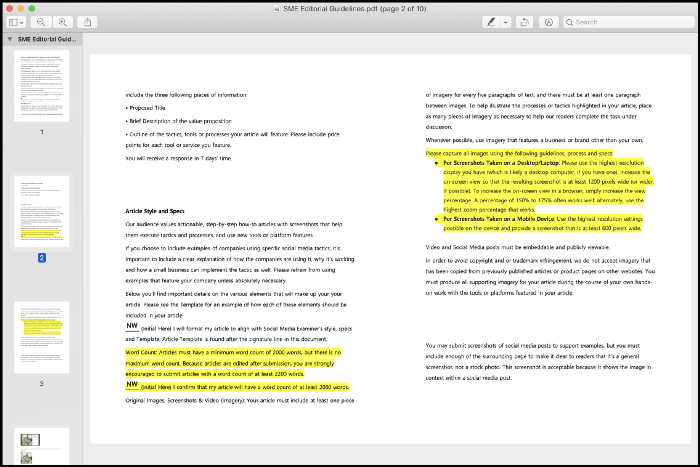Do you struggle to make progress writing because of the demands of your day job, career, or client load? Does it feel like it takes you forever to get any sort of traction or momentum with your articles? Writing advice hits differently when you have a 9-to-5, so in this article, we’ll discuss how to balance your efforts with the demands of a day job.
This post is a sequel of sorts to an earlier article of mine: 3 Tips For Writing Articles Consistently If You Have A Day Job. In reflecting on the response to that article — and continuing to work with experts, entrepreneurs, and aspiring entrepreneurs — it comes up again and again that getting ideas out of your head and onto the page is a common sticking point for aspiring writers.
3 *More* Tips For Writing Articles Consistently If You Have A Day Job - Post Outline
I’m not a writer. I’m a subject matter expert who writes. Discerning those two ideas helps me view writing as more of a technical skill — a muscle to be exercised and strengthened — rather than an extension of my identity.
It might help you to approach writing in a similar way. So just in time for the new year, here are three *more* tips to help you on your way as you juggle work and writing.
Related: Download the author’s free toolkit of 9 article templates right here.
#1: Adopt The “5 Paragraphs” Rule
Studies on eye tracking tell us that our eyes struggle to stay focused when reading walls of text. A nice workaround for this is to adopt the “5 paragraphs rule: Provide a visual break every five paragraphs or less.
This is a rule I first encountered when writing for Social Media Examiner, a site that specializes in long-form tutorials for social media platforms. Their contributor guidelines require that you provide an image every five paragraphs or less in your tutorials, and the rule has always stuck with me.

A “visual break” can be any of the following:
- Subheadline in bold font
- Bullets
- Images
- Embedded videos or social media posts
Established writers will probably frown at this advice. But in my experience, having a flat formatting rule like this helped me (1) have structure during the content creation process, and (2) hold a reader’s attention while I was still finding my writing legs. Additional eye-tracking evidence backs up this claim.
I bow to the Gods and Goddesses on this platform who can hold our attention for 30 paragraphs straight with no formatting. If you’re newer to writing, you’re probably not there yet. I’m not there yet. The “5 paragraphs” rule helps me produce articles that are easier to read and absorb.
#2: Log Ideas And Experiences You Already Have
Coming up with great ideas consistently is hard. It’s also not abnormal for your ideas to be swiped or stolen by other writers shortly after you publish. To safeguard against both of these scenarios, keep an inventory of ideas and experiences you already have floating around inside your brain.
I organize my ideas into three buckets and teach my clients to do the same. These subcategories may help you organize your thoughts as well.
#1: Career and professional expertise
Open your Notes app or grab a pen and paper. Then answer some of the following questions:
- What career or careers have you had?
- What did you study in school?
- Why did you study what you studied?
- What is something you know how to do that can help people?
And so on. This “brain dump” activity will get ideas out of your head and onto the page. When I do this exercise, my next article idea becomes crystal-clear and I’m excited to write about it, which is a winning combination. This isn’t LinkedIn or your CV; let your past work experience come out messy.
#2: Personal stories and experiences
Weaving in personal anecdotes is one of the best ways to make your articles both unique and difficult to copy. Try using one or more of the following prompts to brainstorm past personal experiences:
- What are some of your most vivid memories from grade school? From secondary school?
- What’s something unique or unusual about your family dynamics?
- What have you learned from past friendships or relationships?
- What’s something you have experienced that most people on Earth haven’t or don’t experience?
Your articles don’t always have to consist entirely of personal stories. Most of my articles focus on tactics. However, weaving in a personal story can be a way to add flavor and relatability to your work.
#3: Passions, interests, and miscellaneous zingers
Your stories and experiences consist of what has happened in the past. Consider creating a separate category for stuff you nerd out about in the present moment. Here are a few of my favorite prompts:
- What do you find yourself doing for fun on a Saturday afternoon?
- If you suddenly had an unexpected day off and no access to technology, how would you spend your time?
- Are you a nerd or superfan about certain shows, games, or franchises?
- What recent interests have surfaced or occupied your time in the last year that didn’t previously exist?
The nice thing about these categories is that they are easy to write about. They ride the natural energy and excitement you have about a certain topic.
#3: Publish When You Feel 90% Ready
Perfectionism crushed me when I was getting started. I would finish a draft and feel convinced it was good enough, then wake up the next morning and absolutely second-guess myself.
What helps me is to recall my years leading up to music school. As a teenage French hornist, I likely gave performances and recitals that sounded like a dying cow. I didn’t know any different at the time and performed anyway, and performing as a youngster helped me persevere when the pressure went up in later years.
Once you hit adulthood, it can feel like everything you put out there has to be perfect and polished. This will paralyze you as an adult pursuing a new creative activity.
Publishing your work a little before you feel 100% ready to do so will help you shake off perfectionism triggers. Also keep in mind that on a platform like this, you can self-publish your work and always edit it later.
“Publishing your work a little before you feel 100% ready to do so will help you shake off perfectionism triggers.”
___
Article writing is one of the best ways to get your ideas and expertise out into the world — and you don’t need to do full-time to get started. You do, however, need a system that sets you up for success. Give these tips a try and you might find it easier than ever to juggle your day job with your emerging passion for writing.
Thanks for reading. 🙏🏼
Keep up the momentum with one or more of these next steps:
📣 Share this post with your network or a friend. Sharing helps spread the word, and posts are formatted to be both easy to read and easy to curate – you'll look savvy and informed.
📲 Hang out with me on another platform. I'm active on Medium, Instagram, and LinkedIn – if you're on any of those, say hello.
📬 Sign up for my free email list. This is where my best, most exclusive and most valuable content gets published. Use any of the signup boxes in this article, or go to the newsletter page here.
🏕 Up your marketing game: Camp Wordsmith™ is my business and writing program for small business owners and online entrepreneurs. Get instant access to resources and templates guaranteed to make your marketing hustle faster, better, easier, and more fun. (It's also "glamping"-themed – who doesn't love luxurious camping?!) Learn more here.
📊 Hire my marketing company: Hefty Media Group provides consultation and done-for-you services in content marketing. We're a certified diversity supplier with the National Gay & Lesbian Chamber of Commerce, and we'll make you sound damn good via the written word. Learn more here.
© 2021, 2022, Hefty Media Group. All Rights Reserved.


